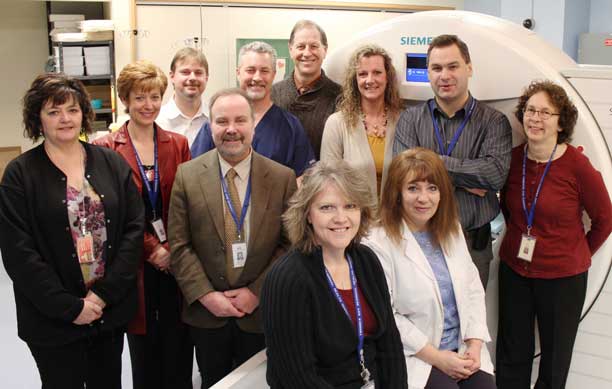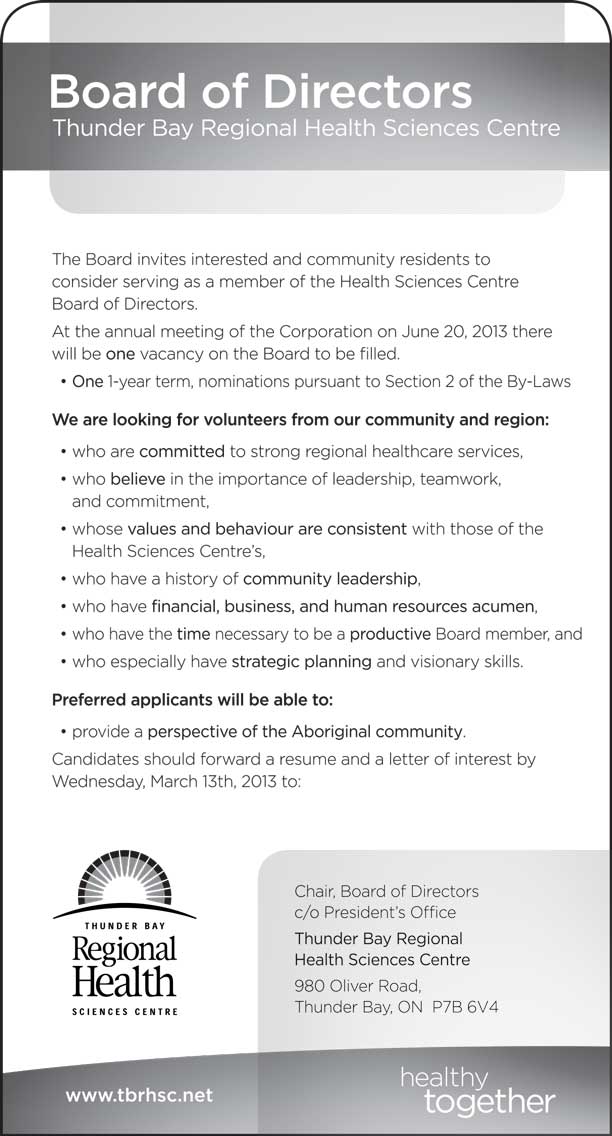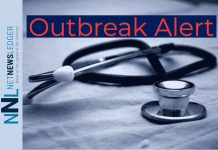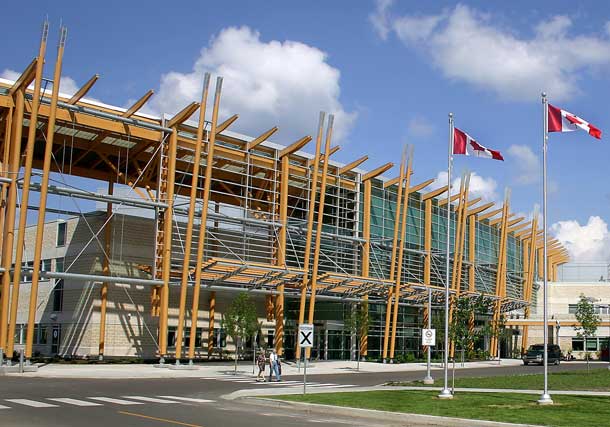

Top row: Cathy Costanzo, Sam McKnight, Doug Cates, Craig Willson, Stephen Exley, Michele Miller, Dr. David Kisselgoff, Dr. Lynn Pratt (Fort William Family Health Team) Bottom row: John Barro, Geraldine Ripa, Cathy Campbell
THUNDER BAY – Health – Is this diagnostic test the right one for you? Physicians and other healthcare providers often need to see inside the body to make observations that the human eye cannot in order to diagnose illness and disease or determine if current treatment is working.
As a vital component of the healthcare system, diagnostic imaging, such as Computed Tomography (CT) scans or Magnetic Resonance Imaging (MRI), provides critical information physicians need to ensure patients are diagnosed and treated in a timely manner.
Diagnostic Testing at TBRHSC
However, it is estimated that between 10 to 20% of requested diagnostic imaging tests may be inappropriate. Determining the appropriateness of each test is complex and is based on the patient’s clinical history, current symptoms and medical necessity.
[sws_pullquote_right]TBRHSC aims to find out through the Diagnostic Imaging Appropriateness Pilot Project [/sws_pullquote_right] According to the Appropriateness Guidelines set out by the Ontario MRI/CT Expert Panel, appropriate tests are those where there is clinical evidence to support the use of the type of test, MRI or CT, to provide relevant and useful information in the diagnosis and/or management of the clinical indication given.
Finding ways to improve the appropriateness of diagnostic imaging test requests could significantly improve wait times for patients.
The Diagnostic Imaging Appropriateness Pilot Project is investigating the possibility of reducing MRI and CT wait times by taking inappropriate test requests out of the queue.
Thunder Bay Regional Health Sciences Centre (TBRHSC) is one of four sites in Ontario involved in testing an electronic order entry (OE) tool that provides decision support to physicians. Physicians login to a secure website where they enter the test they would like to order – for the purposes of this pilot, only MRI or CT scans are being used. Before the request is sent to the hospital, the physician is presented with the recommended test based on the provincial evidence-based guidelines.
According to Lilly Whitham, Business Analyst, University Health Network, participants from Diagnostic Imaging at TBRHSC have been vocal supporters of the project from the outset and made significant efforts to recruit physicians to test the tool, including 18 physicians from the Fort William Family Health Team and one from the Port Arthur Family Health Team.
Pilot participant Dr. Lynn Pratt, Family Physician at the Fort William Family Health Team, says it is useful for physicians to have an approved source to support their decisions. “Being able to show patients the evidence-based reasons for a particular test would enhance the decision making conversation,” says Dr. Pratt.
To date, Thunder Bay physicians have provided the most feedback. “They have been champions of this project,” says Whitham. “Despite some initial challenges implementing the tool, they have been committed to testing and using it and have given an immense amount of feedback. We couldn’t have done it without them.”
TBRHSC is also hosting the entire project’s application and data base servers. Feedback collected from each of the pilot sites will be used to make recommendations about appropriateness initiatives to the Ministry of Health and Long-Term Care.







